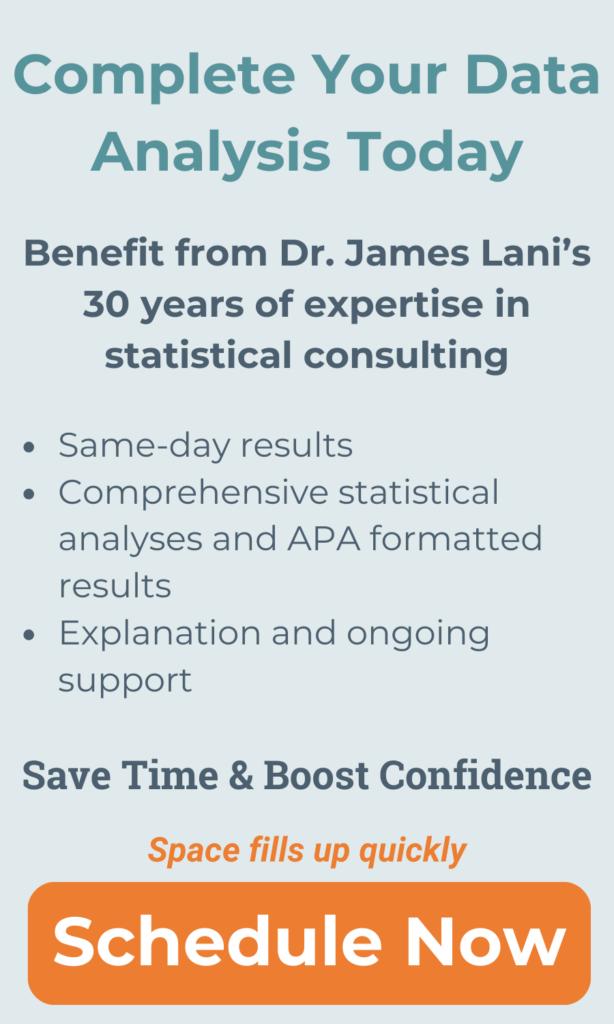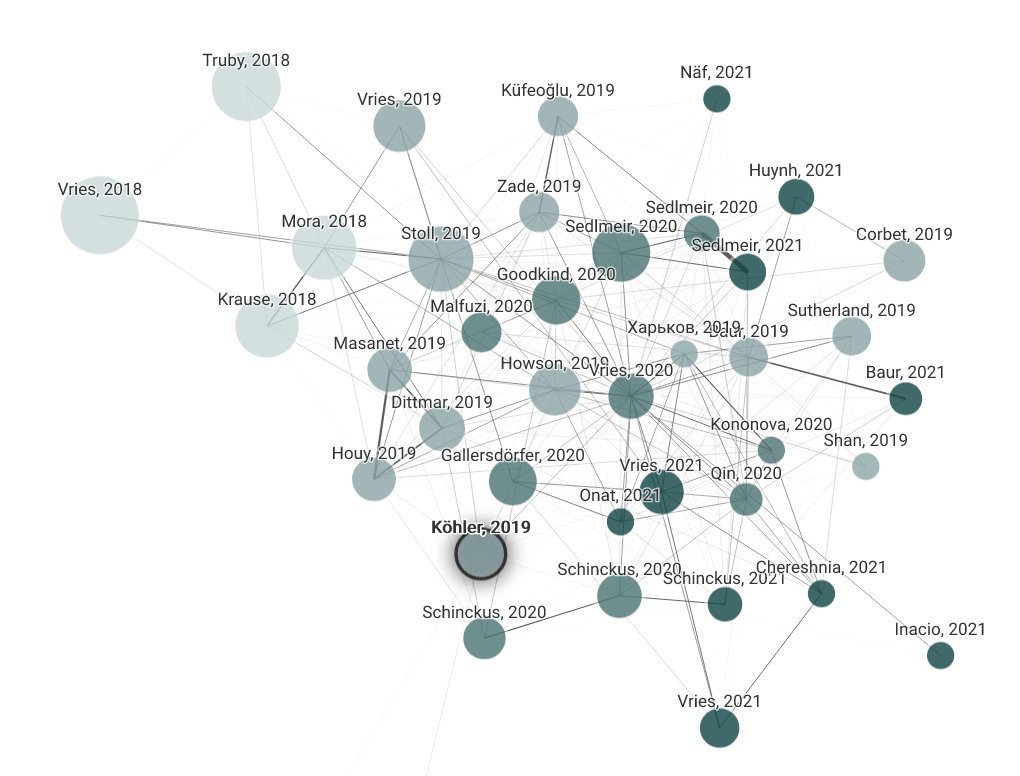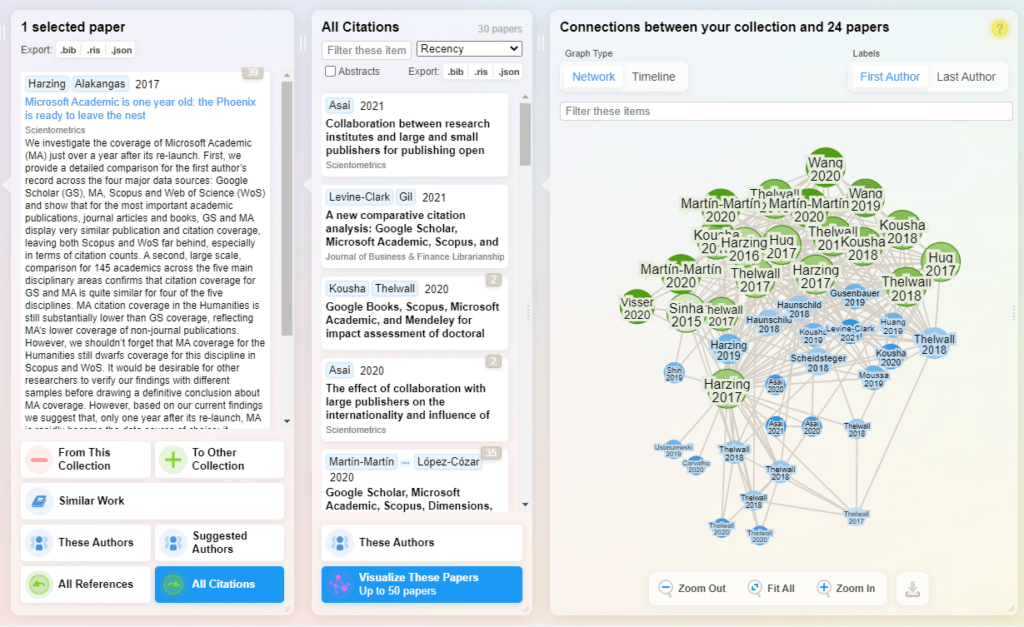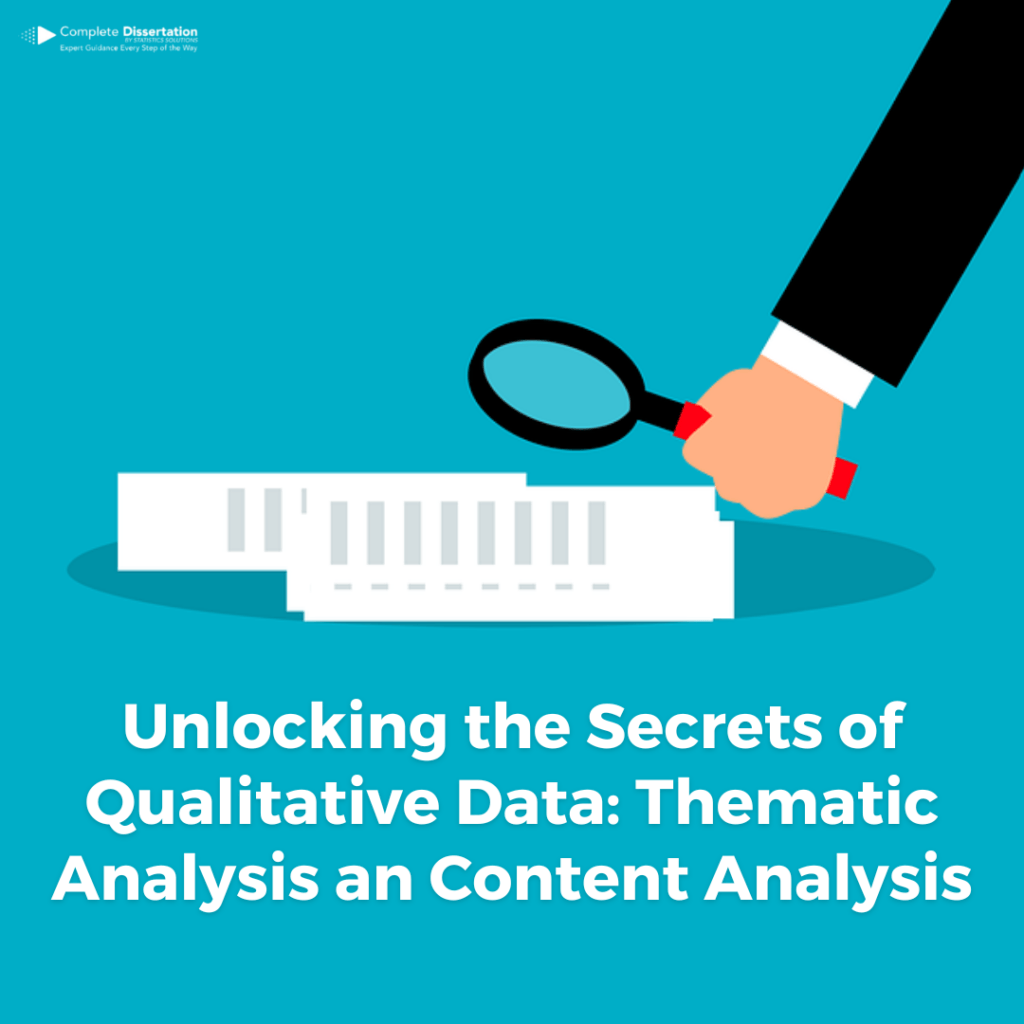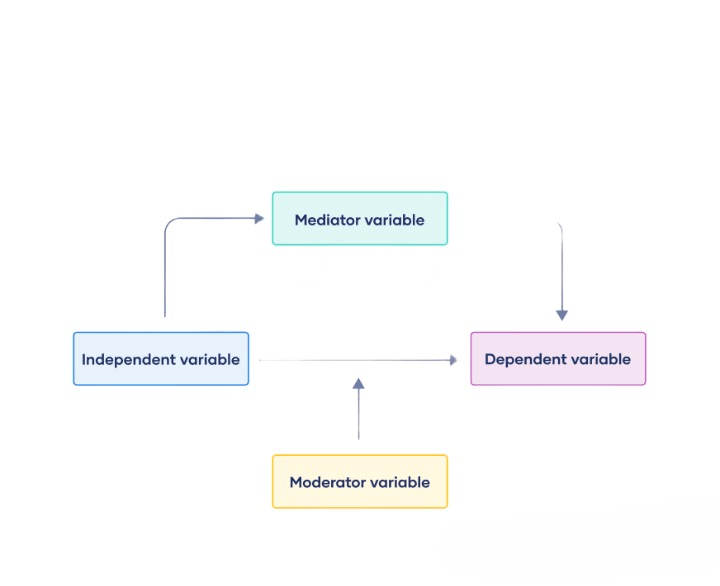
Researchers use moderation and mediation analyses as two statistical techniques in the field of causal inference. But they both serve different purposes and have distinct characteristics. Understanding the similarities and differences between these two techniques is vital when choosing the appropriate method.
Mediation analysis examines how an IV influences a DV through a mediator. This analysis aims to uncover the underlying mechanism or pathway that explains the effect of the IV on the DV. Researchers use structural equation modeling to focus on the causal connections from the IV to the DV through the mediator.
Moderation analysis examines when the effect of the IV on the DV changes. It identifies a moderator that changes the strength or direction of the IV-DV relationship. Researchers typically use multiple regression analysis to highlight when the IV’s impact on the DV varies.
Both mediation and moderation analyses help dissect the causal relationships between variables, but they serve distinct functions. Mediation explains the pathway through which an effect occurs, answering the “how” and “why” of the IV-DV relationship. Moderation examines when the IV-DV relationship changes, revealing the effect’s context.
Mediation analysis clarifies how the IV impacts the DV through a mediator. Moderation analysis explores how a moderator alters the relationship between the IV and DV. Mediation outlines the causal pathway between variables. Moderation highlights the conditions that affect the strength of these relationships.
In summary, researchers use mediation and moderation analyses as key statistical methods for causal inference, each serving unique purposes and approaches. Mediation analysis delves into the mechanism by which the IV affects the DV through a mediator, whereas moderation analysis determines the conditions that alter the IV-DV relationship. Recognizing the distinctions and similarities between these techniques is crucial for selecting the most appropriate analytical approach in research.
Healthcare Example: Mediation Analysis
Scenario: Researchers want to understand how a new physical therapy program (independent variable) improves patients’ mobility (dependent variable) after knee surgery. They suspect that the improvement in mobility is due to increased muscle strength (mediator) that the therapy program promotes.
Mediation Analysis: The researchers set up a study to measure patients’ muscle strength throughout the therapy program. Using mediation analysis, they aim to demonstrate that the physical therapy program directly increases muscle strength, which in turn leads to improved mobility. This analysis would help in confirming that the key mechanism by which the therapy program enhances mobility is through strengthening muscles. If the mediation is significant, it supports the conclusion that muscle strength is a crucial intermediary in the recovery process.
Social Science Example: Moderation Analysis
Scenario: A study is designed to examine the effect of a new educational program (independent variable) on student performance (dependent variable). Researchers hypothesize that the effectiveness of the program varies by the initial skill level of the students (moderator).
Moderation Analysis: In this case, multiple regression analysis is used to assess how the relationship between participation in the educational program and student performance differs across students of varying skill levels. The analysis might reveal that the program significantly improves performance for students with lower initial skill levels but has less impact on students who already possess high skill levels. This moderation analysis underscores the importance of considering initial skill level as a critical factor that influences the program’s effectiveness.
These examples illustrate how mediation and moderation analyses can be utilized to gain deeper insights into the mechanisms and conditions under which specific interventions or programs exert their effects. In healthcare, mediation analysis helps unravel the processes underlying treatment outcomes, while in social science, moderation analysis sheds light on the contexts that enhance or diminish the effectiveness of educational programs.
Additional Resources
What is the difference between moderation and mediation?
Modern Approaches to Moderation and Mediation
When conducting qualitative research, it’s important to keep in mind the ethical considerations that come with it. These ethical considerations can be tricky to navigate. Taking them seriously is crucial to ensure that we conduct our research in an ethical and responsible manner.
Informed Consent
One of the most important ethical considerations in qualitative research is informed consent. This means that participants must be fully informed about the research and participation must be voluntary. This includes informing them of the purpose of the study, the methods that will be used, and any potential risks or benefits. It’s also important to ensure that participants have the right to withdraw from the study at any time.
Confidentiality and Privacy
Another important ethical issue is confidentiality and privacy. It’s crucial that we protect the identity and personal information of our participants. This includes not disclosing their names or any other identifying information in any publications or presentations. Ensure the security and protection of collected data by taking steps to prevent unauthorized access.
Harm
Potential harm to participants is also a significant ethical concept. It’s important to consider the potential risks of the research, such as emotional distress, and take steps to minimize these risks. Put a plan in place for providing support and resources to participants in the event that they experience harm as a result of the research.
Power and Privilege
Finally, it’s important to consider issues of power and privilege in qualitative research. It’s crucial that we are aware of our own biases and how they may influence the research. Be aware of the potential for exploitative relationships between researchers and participants, and take steps to avoid these.
In conclusion, ethical considerations are an important part of qualitative research. Be aware of the potential ethical issues that may arise, and take steps to address them, so we can ensure that our research is conducted in an ethical and responsible manner. Remember, ethical considerations are not only a requirement, they are a way to ensure the safety and well-being of the participants and the integrity of the research.
Additional Resources
Ethics of Qualitative Research: Part 1
Validity in Qualitative Research
Course: Ethical Considerations
Dealing with a challenging committee can be a difficult experience for many doctoral students, but it is a common part of the dissertation process. Satisfactorily addressing each committee member’s feedback can feel like walking a tightrope. There are several strategies that you can use to manage the situation and successfully navigate this experience. Here are some tips on how to deal with a challenging committee.
Preparation and Organization
Keep in mind that you are not the only student that your committee has been assigned to. Identify how many students your committee is working with and develop a consistent schedule in which you can communicate with them. Organize weekly meetings with your committee members so you are always on the same page. Screenshare with Zoom to review feedback together and record meetings so you can rewind, pause, and take notes
Templates and Examples
Before working on any content for your dissertation, locate your school’s dissertation template. A majority of schools provide a dissertation template that identifies the section headings and content that is required for each section. Some universities even provide a rubric or checklist for each section. In addition, ask your committee members for previously approved dissertations that they have worked on in the past. This will give you a baseline understanding of what will be acceptable for approval.
Maintain Professionalism
No matter how difficult the committee process can be, it is important to maintain your professionalism and remain calm and composed. Avoid becoming defensive or argumentative, and instead, respond to their questions and comments in a respectful and professional manner. Don’t rush your committee with reviews but if you feel it is taking a long time, reach out for a progress update. If you don’t agree with a comment or suggestion that they have provided, have a reference or citation to support your claim.
Seeking Support
Don’t be afraid to ask questions. I’ve seen both extremes where some students refuse to ask any questions, while other students are over-reliant on their committee and ask too many questions. You want to find the sweet spot right in the middle. You don’t want to bombard your committee with questions that could potentially be answered independently. Demonstrating initiative can go a long way when it comes to committee reviews.
Additional Resources
Addressing Feedback – Getting Through Quickly and Efficiently
Connected Papers is a platform that helps students and researchers discover, organize, and share information relevant to their research. It is an innovative tool that provides users with a visual and intuitive map. It allows users to explore the relationship between different sources, ideas, and concepts.
For students, literature reviews play a crucial role in the research process. They help to establish the context and background of a topic. They also provide an overview of the existing research in the field. However, conducting a comprehensive literature review can be a time-consuming and overwhelming task, especially when dealing with many sources.
Connected Papers provides a solution to these challenges. It uses natural language processing and machine learning algorithms to extract and analyze the content of academic articles and other research sources. Then, the platform visualizes the connections between sources in a dynamic and interactive map. This allows users to easily navigate through the literature and identify patterns and trends.
Features
One of the key features of Connected Papers is the ability to create and organize annotations. This can be used to highlight key points, summarize findings, and make connections between sources. This makes it easier to keep track of the information you have gathered. From there, you can use this information to build a robust and coherent argument for your literature review.
Another important feature of Connected Papers is the ability to collaborate with other users. This is particularly useful for students who are working on dissertations as part of a group. Additionally, It can also be beneficial to those who are seeking feedback from their supervisor or peers. With Connected Papers, users can share their literature maps with others, and work together to create a comprehensive and well-organized literature review.
Connected Papers also provides a platform for users to share their work and engage with the wider academic community. This can be helpful for students who are looking to build a professional network and establish themselves as experts in their field. By sharing their research and engaging with others, students can receive feedback, find new sources, and gain exposure to different perspectives and ideas.
Final Remarks
Connected Papers is a powerful tool that can help students easily navigate the vast amount of information available in academic literature. With its advanced natural language processing and machine learning algorithms, visual and intuitive interface, and collaboration and sharing capabilities, Connected Papers provides a comprehensive solution for students looking to conduct a thorough and well-organized literature review for their dissertations.
Additional Resources
Streamlining Your Dissertation Literature Review with Research Rabbit
In experimental research, variables are the specific characteristics or factors that are manipulated and measured in order to test a hypothesis. These variables are carefully controlled and manipulated in order to observe the effect on the outcome or dependent variable. For example, in a study examining the effect of a new drug on blood pressure. The independent variable would be the drug and the dependent variable would be blood pressure. The researcher would manipulate the dosage of the drug and measure the corresponding change in blood pressure.
Non-experimental research observes variables in their natural state instead of manipulating them. The researcher does not have control over the variables and cannot manipulate them. Instead, the researcher observes and measures the variables as they naturally occur in the population. For example, a study examining the relationship between income and education level would not manipulate either variable. But instead, observe and measure the levels of each variable in a sample of individuals.
One of the main differences between experimental and non-experimental research is the level of control the researcher has over the variables. In experimental research, the researcher has complete control over the independent variable and can manipulate it to test the hypothesis. In non-experimental research, the researcher does not have this level of control and must rely on observations and measurements of naturally occurring variables.
Another difference is the causal relationship between the variables. Exercising a high degree of control in an experiment helps eliminate alternative explanations for the change in the dependent variable, thereby establishing a causal relationship. However, in non-experimental research, it is not possible to establish a causal relationship because other variables may be influencing the outcome.
Additional Resources:
Quantitative Research Designs: Non-Experimental vs. Experimental
Writing a dissertation can be a long, challenging, and stressful process that demands dedication, hard work, and, most importantly, self-care. Neglecting your mental health while writing a dissertation can have serious consequences. It’s essential to prioritize it to ensure a positive outcome. In this blog, we will discuss five tips to care for your mental health while writing a dissertation.
Tip 1: Create and Stick to a Routine
Establishing a routine is crucial in maintaining good mental health while writing a dissertation. A routine can help you manage stress and increase productivity by providing structure and predictability in your life (Gladding, 2020). Creating a routine can involve setting a schedule for writing, taking breaks, engaging in physical exercise, and practicing self-care. By adhering to a routine, you can reduce stress, increase focus, and improve your overall well-being.
Tip 2: Set Realistic Goals and Expectations
The pressure to succeed can be high when writing a dissertation. It’s essential to set realistic goals and expectations for yourself. Unrealistic expectations can increase stress and negatively impact mental health (American Psychological Association, n.d.). By breaking down your work into manageable steps and setting realistic goals, you can reduce stress and increase the chances of success. Remember that success is not defined by one outcome, and taking care of your mental health should be a top priority.
Tip 3: Engage in Self-Care
Self-care is crucial in maintaining good mental health while writing a dissertation. Self-care activities promote physical, mental, and emotional well-being and can include exercise, sleep, healthy eating, and taking breaks (American Psychological Association, n.d.). Engaging in physical exercise can help reduce stress, improve focus, and increase overall well-being, while self-care activities can promote relaxation and provide a mental break from the demands of writing a dissertation.
Tip 4: Build a Support Network
Feeling isolated and lonely while writing a dissertation can have a negative impact on mental health. To counteract these feelings, it’s essential to connect with others and build a support network. This can include friends, family, peers in your academic field, or campus resources such as counseling services or student organizations (Gladding, 2020). Having a support network can provide emotional support, help you navigate the challenges of writing a dissertation, and improve your overall well-being.
Tip 5: Seek Help if Needed
If you’re feeling overwhelmed, stressed, or struggling with mental health issues, it’s essential to seek help. This can include talking to a friend or family member, reaching out to campus resources, or seeking professional counseling (American Psychological Association, n.d.). Remember, campus resources for mental health care are often either free for students or offered at a reduced cost compared to those in private practice. Seeking help is a sign of strength and can be a critical step towards improving your mental health and well-being while writing a dissertation.
In conclusion, writing a dissertation can be a long and challenging process, and it’s essential to prioritize your mental health while working on it. By following these tips, including creating a routine, setting realistic goals, engaging in physical exercise and self-care, connecting with others, and seeking help if needed, you can reduce stress, increase resilience, and improve your chances of success. Remember, taking care of your mental health should be a top priority, and seeking help is a sign of strength.
References
American Psychological Association. (n.d.). Stress in America. Retrieved from https://www.apa.org/news/press/releases/stress/
Gladding, S. T. (2020). Mental Health and Wellness in College and Beyond. Pearson.
Researchers use matching pre and post-data to compare the results of a study before and after an intervention. This technique is common in experimental research, including clinical trials, educational research, and social science research. The goal of matching pre and post-data is to determine the effectiveness of an intervention by comparing the results before and after the intervention. In this blog post, we will discuss the various methods of matching pre and post-data and their advantages and disadvantages.
Matched-Pairs Design
One method of matching pre and post-data is the matched-pairs design. In a matched-pairs design, researchers match participants on one or more variables and then randomly assign them to either the intervention or control group. They compare the results before and after the intervention with each pair of participants. Researchers consider this method to be the most powerful design for controlling extraneous variables and often use it in randomized controlled trials.
Repeated-Measures Design
Another method of matching pre and post-data is the repeated-measures design. In this design, researchers measure participants on the same variables before and after the intervention. This method is considered less powerful than the matched-pairs design because it does not control extraneous variables as effectively. However, researchers often use it in cases where it is not possible to match participants on all relevant variables.
Crossover Design
A third method is the crossover design. In this design, each participant acts as their own control by receiving both the intervention and the control in different time periods, or in different orders. Researchers consider this design to be more powerful than the repeated-measures design, and it eliminates the need to match participants on all relevant variables. However, this design may be affected by carryover effects. This is when the effect of the intervention still remains after it has been discontinued.
Before-After Design
The final method involves collecting data before and after an intervention but without a control group. Researchers know this method as the Before-After design. This design is the simplest, but it’s also the least powerful as it cannot control for extraneous variables, and it cannot determine causality.
Final Remarks
In conclusion, researchers use matching pre and post-data to compare the results of a study before and after an intervention. The methods of matching pre and post-data include matched-pairs design, repeated-measures design, crossover design and Before-After design. Each of these methods has its own advantages and disadvantages, and the choice of the appropriate method depends on the specific research question and the characteristics of the study population. By carefully selecting the appropriate method of matching pre and post data, researchers can ensure that their results are accurate and reliable.
In quantitative studies, researchers often have highly specific research questions and know exactly which variables to examine. I recommend this approach because setting the methodology and data analysis plan in stone as early as possible is important. You need to have a step-by-step list of how you plan to analyze your data. However, if you have more open-ended research questions or haven’t agreed upon a final set of variables, then you may be resorting to “fishing for significance”. This is many times a frowned-upon approach in the world of statistics. It essentially means that you are casting a wide-net and hoping to find statistically significant results. When dealing with archival data sets or examining a large list of potential predictor variables, sometimes there isn’t really an alternative.
Building Predictive Models
If you are attempting to build predictive models such as regressions, then bivariate tests can be conducted first to establish which variables are statistically significant with the dependent (outcome) variable. There are several bivariate analyses that can be run based on the level of measurement for your variables of interest:
Chi-square test of independence – if your potential predictors and dependent variable are nominal measurements.
Pearson correlations – if your potential predictors and dependent variable are continuous measurements (interval).
Spearman correlations – If your potential predictors or dependent variable are ordinal measurements.
Point-biserial correlation – if you have a combination of binary and continuous (interval) measurements.
Based on the results of these bivariate analyses, you can then place the significant variables into a regression model and analyze the collective model fit and strength of the individual predictors. This is a more organized and structured way of building regression models instead of inputting 20+ predictors into the model at once. It allows you to narrow the regression model down because you are eliminating variables that do not have a two-way association with the dependent variable.
Additional Resources:
Correlation (Pearson, Kendall, Spearman)
Confidently Conduct and Interpret Correlation Tests
Research Rabbit is a new and innovative tool designed to help students with their literature reviews for their dissertations. It is a free, web-based platform that provides interactive conceptual maps and streamlines the research process. This makes it easier for students to access and organize the vast amount of information available on their topic.
One of the biggest challenges students face when writing a literature review is finding and sorting through relevant information. Research Rabbit helps solve this problem by allowing students to search for and save articles, books, and other sources. This makes it easier for students to keep track of their research and avoid missing important information.
Features
Research Rabbit also includes features such as note-taking and highlighting, which allow students to quickly and easily summarize and extract important information from the sources they are reading. Researchers can easily organize and incorporate this information into their literature review.
In addition to these practical benefits, Research Rabbit also saves students time. Instead of spending hours searching for information, students can use Research Rabbit’s efficient search tools to quickly find the information they need. And because all the information is saved in one place, students can easily refer to it when they are writing their literature review.
Another great feature of Research Rabbit is that it can be accessed from anywhere with an internet connection. This means that students can work on their literature review from the library, a coffee shop, or even from home. This flexibility is useful for students who have busy schedules and need to work on their literature review on their own time.
Final Remarks
Research Rabbit is also very user-friendly. The platform has been designed with the needs of students in mind, and it is easy to use and navigate. This makes it accessible to students of all skill levels, regardless of their prior experience with research tools.
This is an excellent tool for students who are working on their literature reviews for their dissertations. It makes the research process easier, saves time, and provides a user-friendly platform for organizing and incorporating information into the literature review. Whether you are a seasoned researcher or just starting out, Research Rabbit is an invaluable resource for anyone who needs to conduct a literature review for their dissertation.
Additional Resources
Streamlining Your Dissertation Literature Review with Connected Papers
When analyzing qualitative data, researchers often use two methods: thematic analysis and content analysis. While they both have their similarities, they also have some important differences.
Thematic Analysis
Thematic analysis is a way of identifying, understanding, and interpreting patterns of meaning in data. Researchers often use it to explore the experiences and perspectives of participants in a study. The process of thematic analysis involves reading the data several times, identifying themes, and coding the data accordingly. To begin, the researcher must read through the data and identify meaningful segments, then code them according to themes. The themes are then organized and analyzed to generate an understanding of the data. Thematic analysis is quite flexible and can be used with both quantitative and qualitative data. When the focus of research is to understand the personal experience of a group of people, such as in a qualitative survey, it is a good option to consider.
Content Analysis
Content analysis, on the other hand, is a way of quantitatively analyzing data. Researchers use it to examine patterns in the frequency of words, themes, or other content within a text. The process of content analysis involves counting the number of times certain words or themes appear in the data, and then analyzing the results. Content analysis is great for identifying patterns and trends in large amounts of data. It is often used to analyze media like newspapers or social media posts. It’s a useful option when research is focused on understanding the frequency of certain themes or content in a specific media or in a large set of data.
Final Remarks
In summary, both thematic and content analysis are methods used to analyze qualitative data and answer different research questions. Thematic analysis is used to explore the experiences and perspectives of participants, while content analysis is used to identify patterns and trends in large amounts of data. It’s important to consider the research question and the data you have to decide which method is the most appropriate for your research.
Looking for a tool to analyze your qualitative data? Check out Intellectus Qualitative, the ultimate platform designed to redefine your qualitative research experience. Whether you’re a novice student researcher, a faculty member, or an experienced researcher, you’ve discovered a tool that combines simplicity with the power of AI.
Take the course: Thematic Analysis
